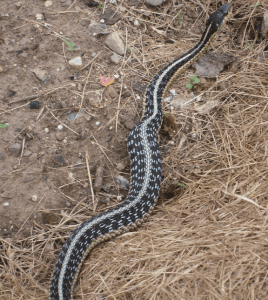Snakes are among the most misunderstood animals.Hundreds are needlessly killed each year. People panic when they encounter a snake, fearing it poisonous.Poisonous snakes in Connecticut, copperheads and rattlesnakes, are seldom encountered and only in specific habitats, such as piles of rocks known as talus slopes and rocky cliffs and hillsides. Poisonous snakes will onlyattempt to bite people when they feel threatened. If you see one, enjoy it from a distance!
Most snakes eat insects, amphibians, small mammals, fish, and worms. Humans are definitely not on the snake menu. Snakes help keep Connecticut’s population of small mammals under control. Think of them as free mouse and vole control!
Snakes spend most of their time hidden under logs and stones. They move stealthily and are rarely detected by humans.
The story of St. Patrick casting the snakes out of Ireland and into the sea is just a story. There have been no snakes in Ireland since prior to the last Ice Age, which ended about 10,000 years ago.
For additional information on snakes in Connecticut, peruse the DEEP publication, Snakes in Connecticut:
